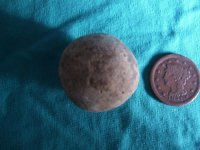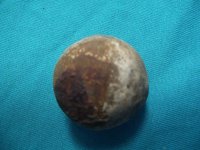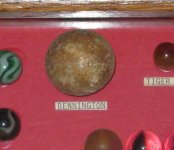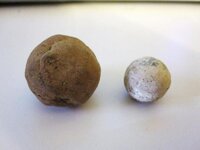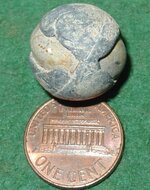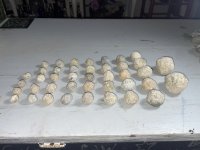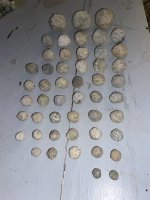nova treasure
Bronze Member
I have heard over the years that the Confederates in desperation toward the end of the War had made canister shot out of clay and than kilned it with it covered in zinc. I have never seen one until possibly now. I haven't weighed it yet, but it does weigh considerably less than iron or lead but with a hard coating . It is 1 1/2 " in diameter and crudely made. it was found at a Union camp, with several buttons including the one in the pic, bullets and camp relics. So I was thinking, if it is a clay canister shot than maybe it was taken as a souvenir  .
.
I am sure the actual weight will help determine, but any thoughts will be appreciated.
Bill
I thought I would add a couple more pics, just to show alittle more detail of the ball. the dark color areas around the ball is like a coating and than the rusted color is where it had sat on something of iron for a period of time, but nothing was found in the hole with it.
 .
.I am sure the actual weight will help determine, but any thoughts will be appreciated.
Bill
I thought I would add a couple more pics, just to show alittle more detail of the ball. the dark color areas around the ball is like a coating and than the rusted color is where it had sat on something of iron for a period of time, but nothing was found in the hole with it.


